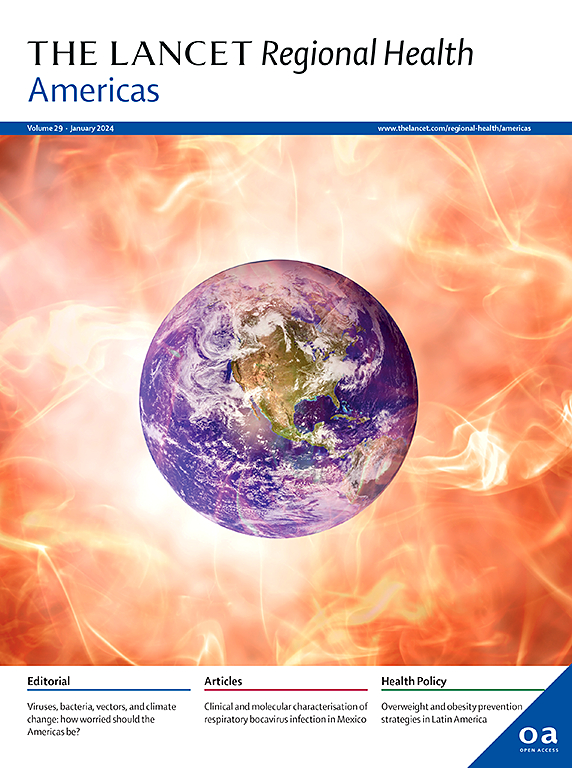Hidden figures underlying quality measures: revealing hidden racial inequalities in end-of-life cancer care delivery: a cohort study
IF 7
Q1 HEALTH CARE SCIENCES & SERVICES
引用次数: 0
Abstract
Background
Calls for healthcare systems to reduce disparities in cancer care access and outcomes draw on comparisons of existing measures across race and ethnicity subgroups. This approach may hide inequities driven by systematic bias in the timing of care delivery. The goals of this study were to: (1) identify differences in the timing of care delivery between racial groups, and (2) determine whether these differences could be identified from quality measures.
Methods
Retrospective decedent follow-back study of hospitals treating Medicare fee-for-service beneficiaries with advanced cancer aged 65–99 who died April–December 2016. Among hospitals serving at least 11 decedents of color (including Black or African-American, Asian/Pacific Islander, Hispanic, American Indian/Alaska Native, and Other) and 11 White decedents, we calculated hospital-level differences between White decedents and decedents of color for 1) any use of palliative care and hospice (Measures) and 2) daily counts of palliative care and hospice use for each day in the 6 months before death (Signatures).
Findings
The cohort included 30,319 decedents across 217 hospitals, of whom 7,852 (25.9%) were people of color (POC). The median of the hospital-specific aggregate measure difference was −5.35% (IQR = 12.83) for palliative care, indicating more POC received any palliative care, and 3.66% (IQR = 12.45) for hospice care, indicating more White people (WP) received any hospice care. We identified 5 high-level cluster-group descriptions of inequality from signatures. Inequality information from signatures matched those from measures in only 46.5% and 39.2% of hospitals for palliative and hospice care, respectively.
Interpretation
Signatures incorporating timing of care delivery using longitudinal data revealed patterns of racial-ethnic inequalities in end-of-life cancer care otherwise missed by traditional aggregate quality measures.
Funding
This work was supported by the American Cancer Society Award (RSG-22-128-01-HOPS).
隐藏的数字背后的质量措施:揭示隐藏的种族不平等在临终癌症护理交付:一项队列研究
呼吁医疗保健系统减少癌症治疗可及性和结果的差异,是基于对不同种族和族裔亚组现有措施的比较。这种方法可能隐藏了由提供护理时间的系统性偏见所导致的不公平现象。本研究的目的是:(1)确定种族群体之间护理时间的差异,(2)确定这些差异是否可以从质量测量中识别出来。方法对2016年4月至12月死亡的65-99岁晚期癌症患者的医院进行回顾性已故患者随访研究。在服务至少11名有色人种死者(包括黑人或非裔美国人、亚洲/太平洋岛民、西班牙裔、美洲印第安人/阿拉斯加原住民和其他)和11名白人死者的医院中,我们计算了白人死者和有色人种死者在医院水平上的差异:1)任何姑息治疗和临终关怀的使用(测量);2)在死亡前6个月内每天使用姑息治疗和临终关怀的数量(签名)。该队列包括217家医院的30,319名死者,其中7,852名(25.9%)是有色人种(POC)。医院特异性综合测量差异的中位数在姑息治疗方面为- 5.35% (IQR = 12.83),表明有更多的白人接受姑息治疗;在临终关怀方面为3.66% (IQR = 12.45),表明有更多的白人(WP)接受临终关怀。我们从签名中确定了5个高层次的不平等集群群描述。来自签名的不平等信息与分别只有46.5%和39.2%的姑息治疗和临终关怀医院的测量结果相匹配。利用纵向数据结合护理交付时间的特征揭示了在癌症临终关怀中种族-民族不平等的模式,否则传统的综合质量测量会忽略这些模式。本研究得到了美国癌症协会奖(RSG-22-128-01-HOPS)的支持。
本文章由计算机程序翻译,如有差异,请以英文原文为准。
求助全文
约1分钟内获得全文
求助全文
来源期刊

Lancet Regional Health-Americas
Multiple-
CiteScore
8.00
自引率
0.00%
发文量
0
期刊介绍:
The Lancet Regional Health – Americas, an open-access journal, contributes to The Lancet's global initiative by focusing on health-care quality and access in the Americas. It aims to advance clinical practice and health policy in the region, promoting better health outcomes. The journal publishes high-quality original research advocating change or shedding light on clinical practice and health policy. It welcomes submissions on various regional health topics, including infectious diseases, non-communicable diseases, child and adolescent health, maternal and reproductive health, emergency care, health policy, and health equity.
 求助内容:
求助内容: 应助结果提醒方式:
应助结果提醒方式:


